28 South African Animals You Can Actually See
Offering an illustrious glimpse into one of the most explored yet almost untouched areas of the world, South Africa is a hot spot for tourists and naturalists alike. Almost every tourist visiting South Africa wants to explore its majestic wildlife, but first-timers don’t know what to do.
Must-See South African Animals

You must remember many animals in South Africa are exclusive to the country, so you won’t find them anywhere else. This means you must respect the animals you see, don’t interact with them unless instructed by a professional safari guide, and don’t damage the environment.
It’s equally important to remember that many of these animals can be elusive, so you might have to stick around for a few hours if you want to see them all. Let’s move on to the list of 28 South African animals you can actually see when you head out on a safari tour.
Leopards
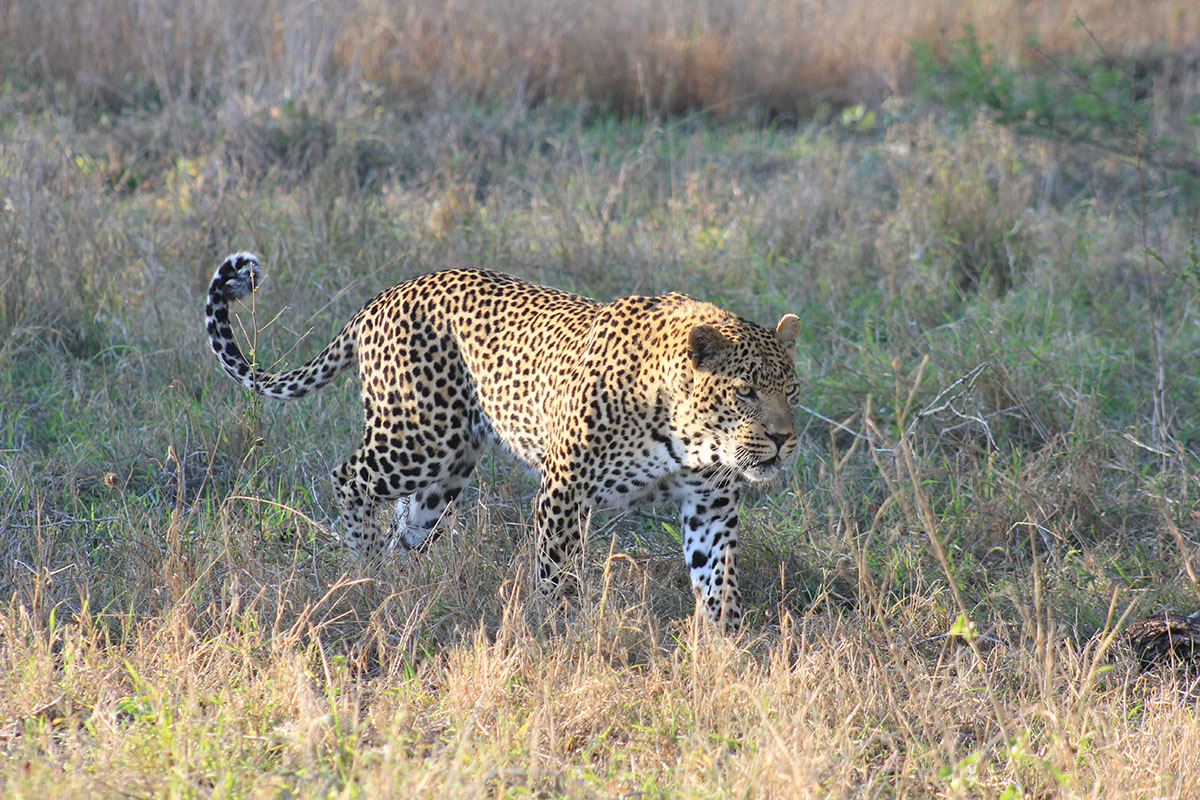
Those hoping to see leopards must remain alert and still at all costs because these elusive creatures are masters of camouflage and won’t stand out from the yellowish grassland. You’ll only spot a leopard when it emerges from its hiding spot to pounce on a prey. Watching this will show you why it’s included in the Big Five.
Buffalo
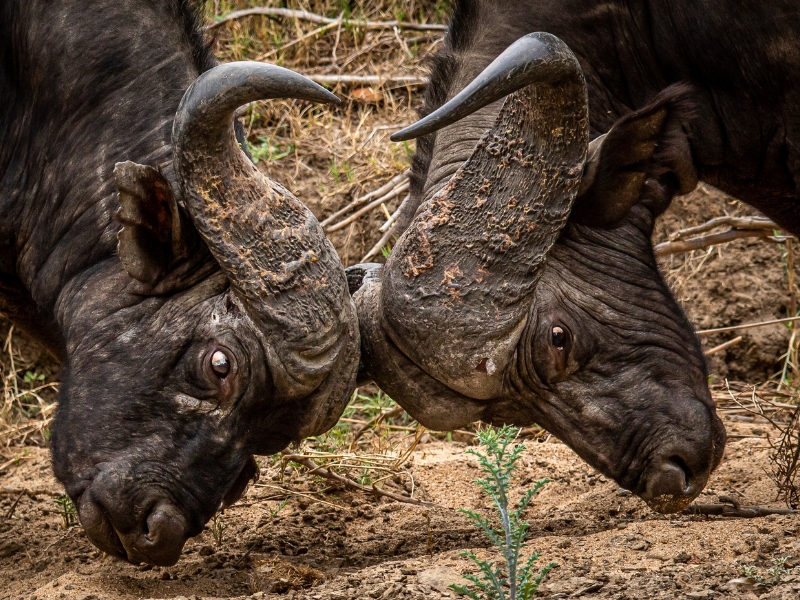
Another member of the Big Five, buffalos in South Africa, are a sight to behold. Their sheer size makes them intimidating, but their habit of traveling in large herds makes them terrifying. Buffalos are highly territorial and have an intense herd instinct; coming close to even one will attract hundreds, so it’s best to stay low.
Lions
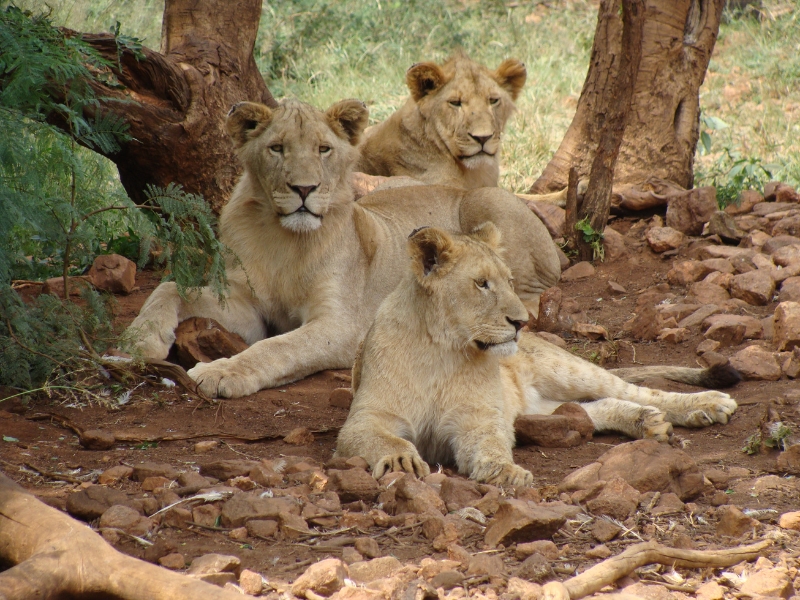
Easily the top creature in the Big Five, lions are the most iconic animal in South Africa. Their sheer size and intense gaze make them a formidable foe, but a single roar can chill you to your bone. Interestingly, a South African lion’s roar can be heard up to 5 miles (8 km), so most tourists can figure out if they’re close to a sighting. Most South African lions are used to being observed by tourists, so they tend to lay low and relax. However, hunting times and mating seasons make them aggressive, so it’s best to follow the safari guide intently.
Elephants
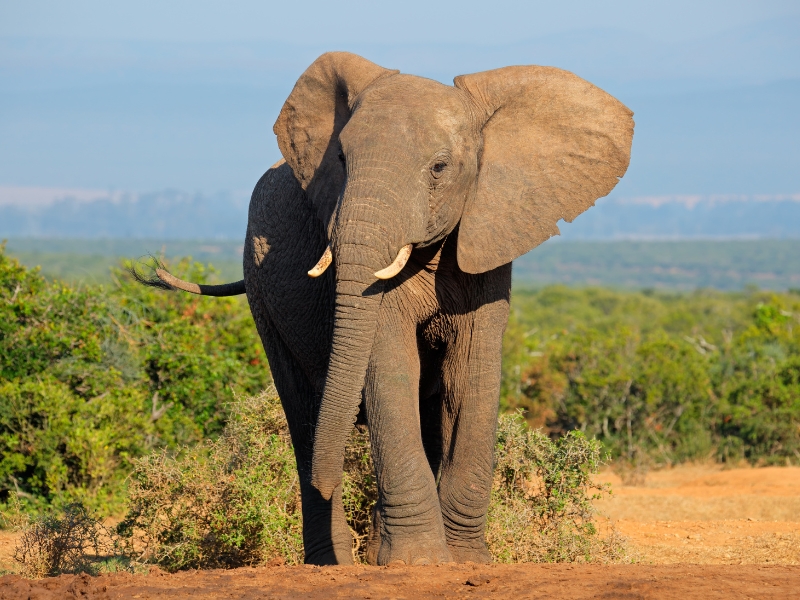
Calm and gentle, this Big Five animal casually saunters and is relatively unphased by tourists. Luckily, most African elephants are cheerful and friendly and even approach tourists. However, you mustn’t interact with elephants without a tour guide present. Elephants are gentle, but depending on the circumstances, they might dip into their wild instincts.
Rhinos
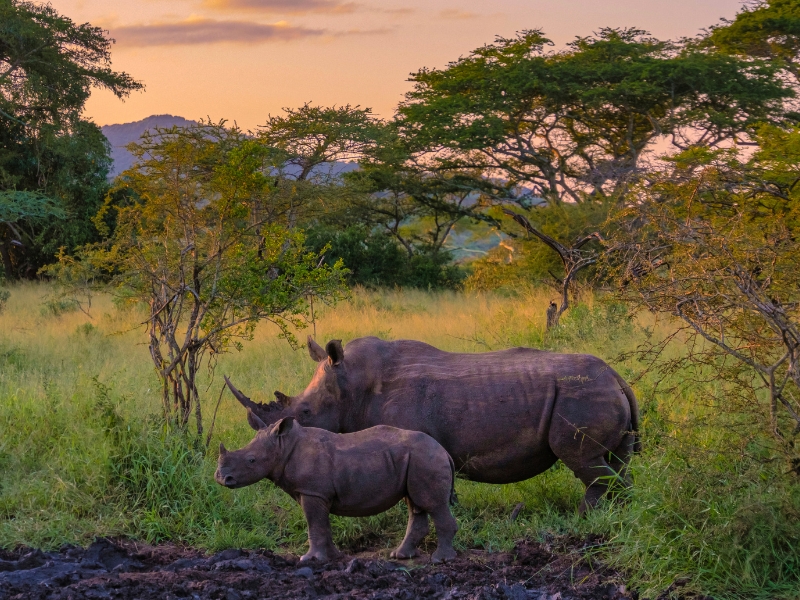
A monstrous figure made even more intimidating by the sharp horn; rhinos are among the strongest South African animals. Their intense gaze and aggressive personalities make them a standing threat to anyone. Rhinos are highly territorial and easily agitated, which isn’t the best combination. This duo of behaviors is why rhinos casually charge toward anyone they consider a threat.
Dolphins

One of the most social animals in the world, dolphins are a true delight to see. Their cheerful attitude and friendliness to strangers make diving experiences worth the trip.
South African dolphins are fascinating creatures; it is obvious these dolphins are used to stealing the spotlight, so they’ll eagerly approach tourists and even ask for snout rubs.
Great white sharks
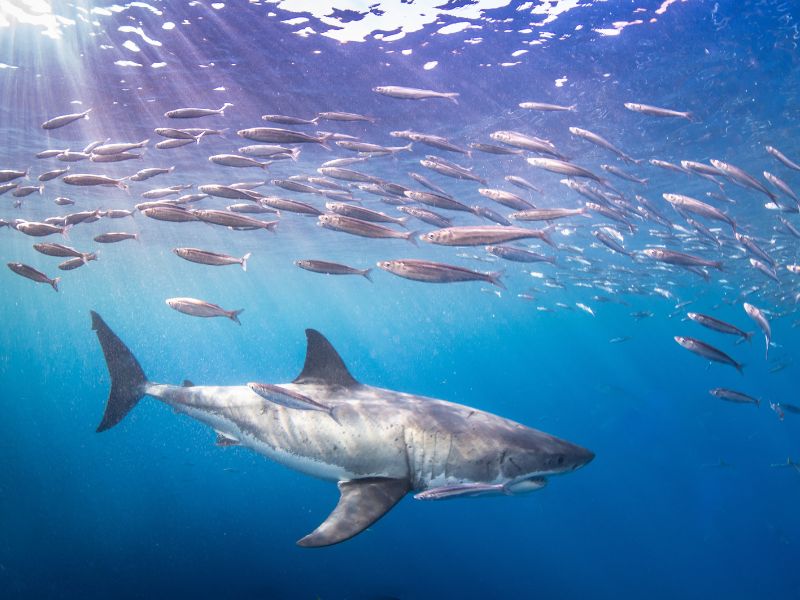
An intimidating row of teeth, a ghastly personality, and a tenacity to destroy anything that disrupts their peace, great whites are a majestic beast that invites you to witness their bravado.
While seeing great whites may not be everyone’s cup of tea, marine enthusiasts and adventure seekers might dive into South African waters for a glimpse. South African waters teem with these creatures, so sightings will be easy.
Aardvark

When the sun starts to set, tourists might see a small creature scuttling through the dark. This might be the elusive aardvark, an adorable animal that only appears when it’s time to eat. Aardvark are nocturnal, so they spend most of their day huddled in their burrows. Some aardvark might be visible during the day, but it’s a rare sight.
Turtles
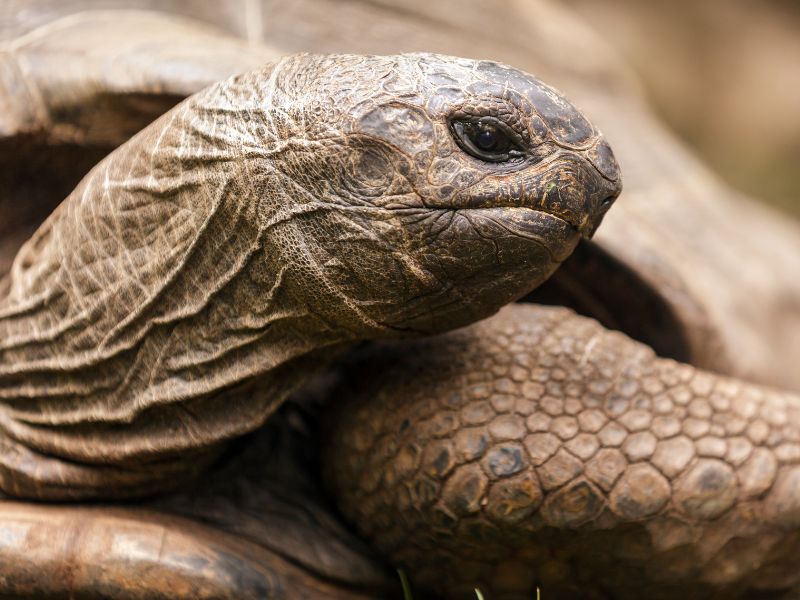
Animal enthusiasts find South African turtles a particularly amazing sight because their relaxing demeanor and gorgeous features emit a soothing aura. Most of these turtles are friendly, so they’ll warm up to tourists, but it’s essential to give them space.
African wild dogs
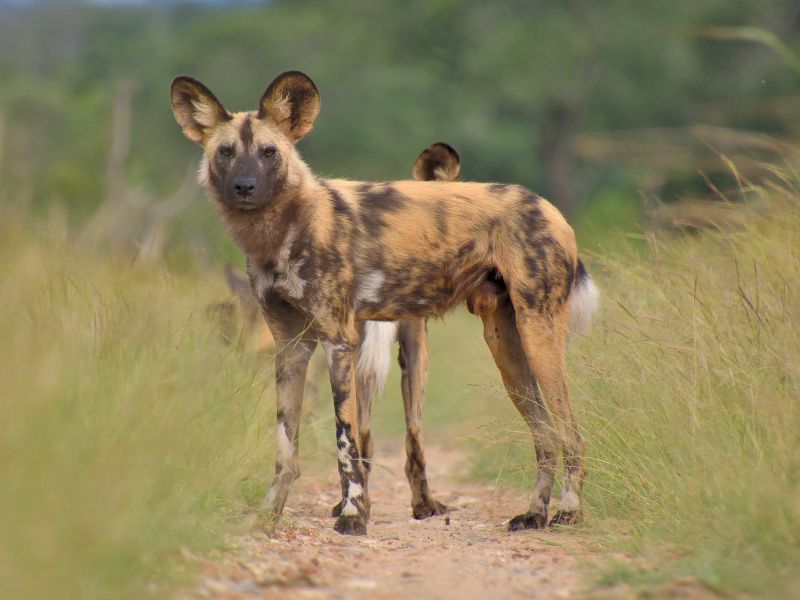
One of the strongest hunters in South African savannahs, African wild dogs emerge together as a pack and continue to follow a strict hierarchy until their last breath. This is just a testament to their loyalty and characteristics tourists will easily spot because of their willingness to help the elderly of the pack.
Zebras

Many tourists visiting South Africa are stunned by seeing the herds of zebras because, unlike the ones kept in zoos, wild zebras are aggressive and unfriendly to strangers.
These striped animals stand out quickly, so they’re often the center of attention, both by man and other animals. This makes them one of the few animals that might give you a gory outlook into the wild.
Blue crane
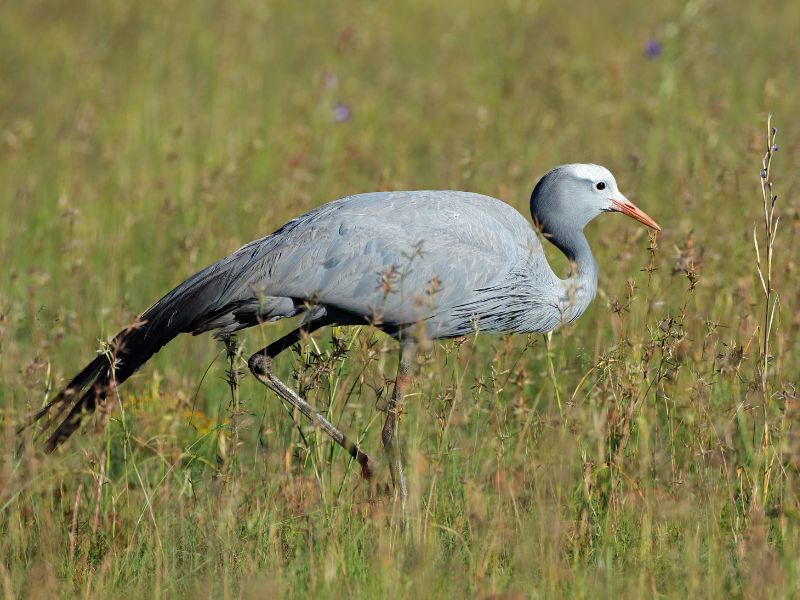
The Blue crane is South Africa’s national bird, and its majestic appearance makes it worthwhile every camera shot. Their slender necks and smooth plumage delight animal lovers, who can’t help but adore these birds.
Blue cranes are incredibly captivating when wooing a female partner; their courtship involves an attractive dance and displays of strength like high leaps and nosedives.
Bontebok
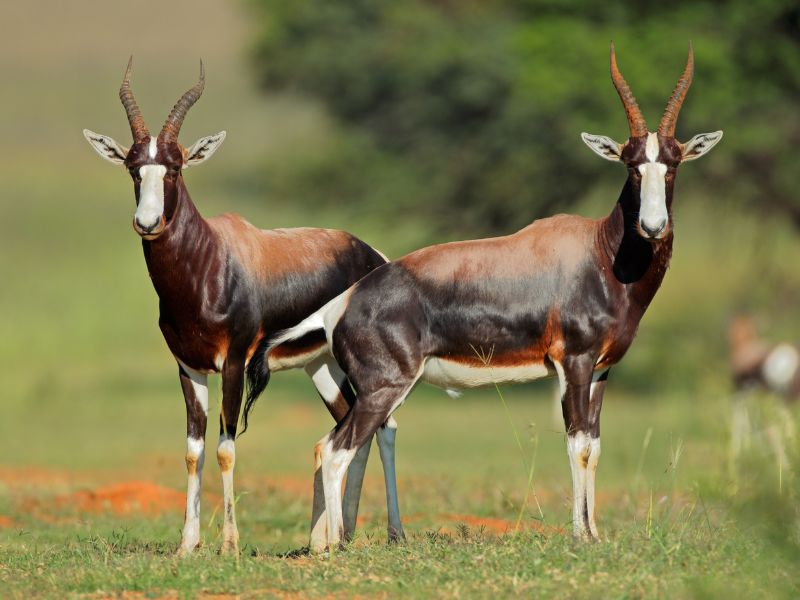
An antelope species endemic to South Africa, bontebok is highly recognizable because of a bright white pattern covering its face and lower parts of its limbs. The bontebok’s unique appearance and general rarity make it one of the most exciting and intriguing animal sightings. Unfortunately, bontebok is close to extinction because of poachers. This is why every tourist must keep their distance and avoid any behavior that could startle the bontebok or make it an easy target for other wildlife.
Cape grysbok
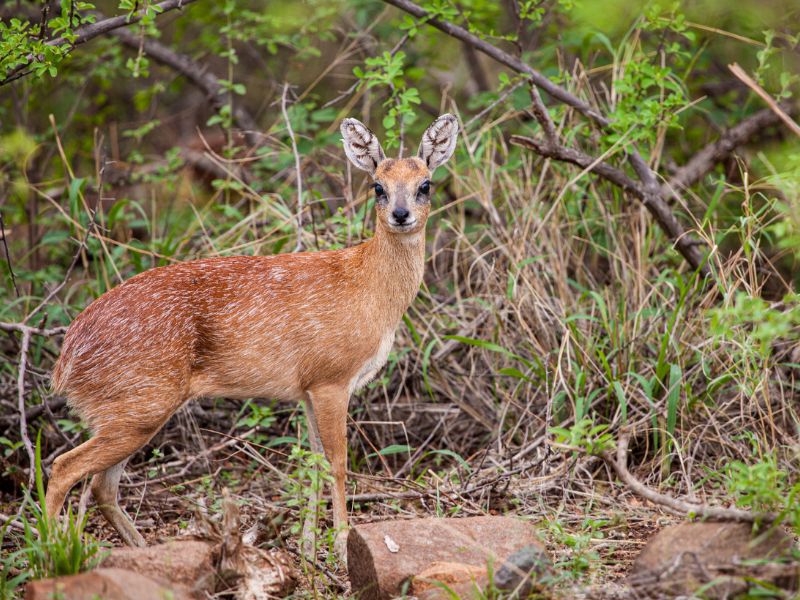
Tourists experience an intense urge to pet the Cape Grysbok, but you must fight this urge because the animal is easily scared and is an easy catch for predators.
The Cape or grysbok is a type of antelope endemic to South Africa. What makes it unique is its small size; it stands around 20-21” at the shoulder, so they’re often mistaken for small boars or similar animals.
Eastern Cape kudu
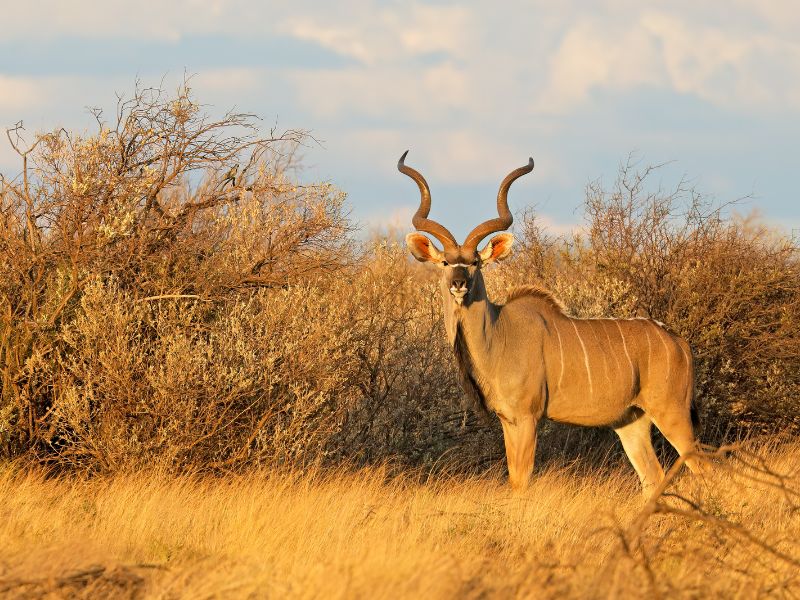
Its curved horns bear witness to an elegance no one would expect from South African animals; the Eastern Cape kudu is one of the country’s most desired animals.
Coincidentally, the eastern Cape kudu is also one of the most elusive creatures, making sightings even more special and worthwhile. Sightings are so unique the animal has been called the Grey ghost because its grey-brown hide easily camouflages.
Horseshoe bat
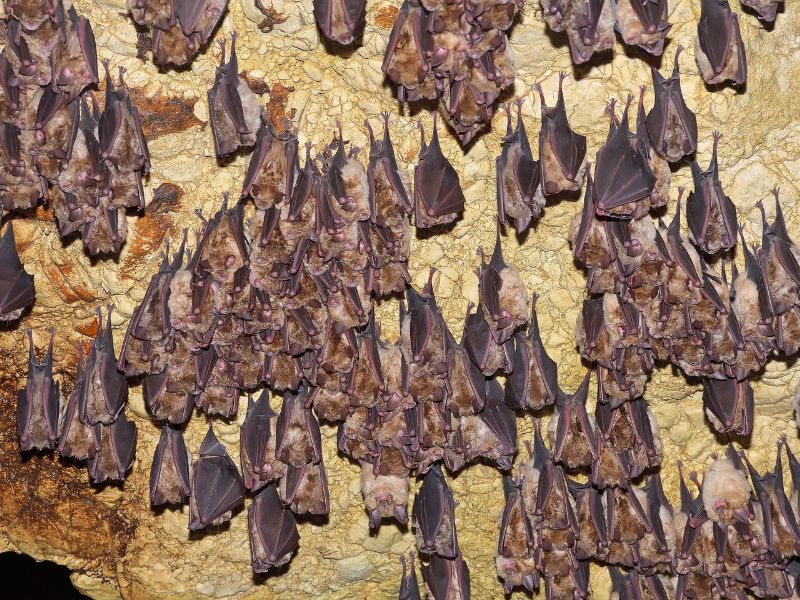
This might be one of the most unusual species, but their presence makes for an exciting cave exploration. This South African animal isn’t visible during safaris but cave exploration activities, so they’re more catered toward naturalists and thrill-seekers.
Seeing caves teeming with hundreds of horseshoe bats is difficult to put into words, but tourists are strictly advised to stick to their tour guide’s instructions and watch silently.
African jacana
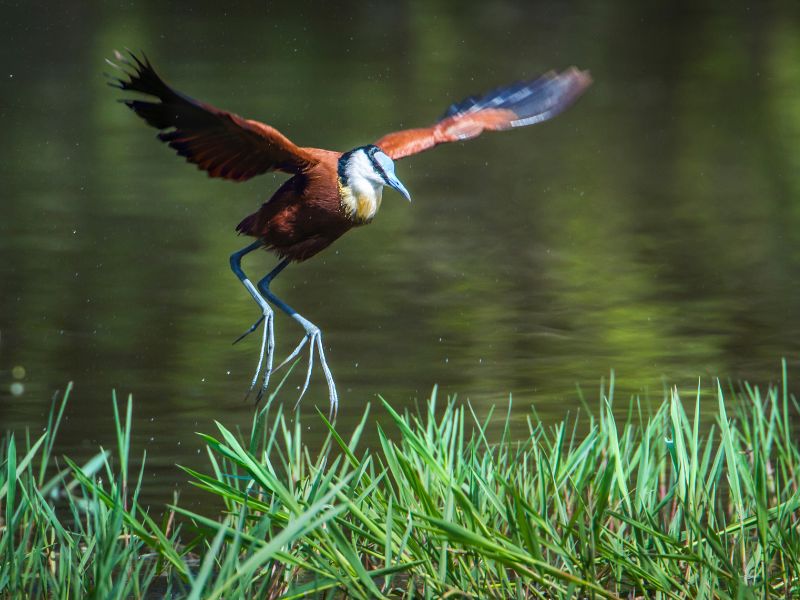
An exciting sight for bird lovers, African jacana is one of the most beautiful creatures that roam South Africa. You might be confused at first because many African jacanas seem to have four or more legs, but it’s a clever tactic to protect their young. Adult jacanas hide their chicks under their plumage, protecting them against predators and harsh wings. Of course, this makes for an amusing insight into the defenses of wild animals. Mating season brings colorful displays and wings flapping, so it’s worth every minute.
Nile crocodile
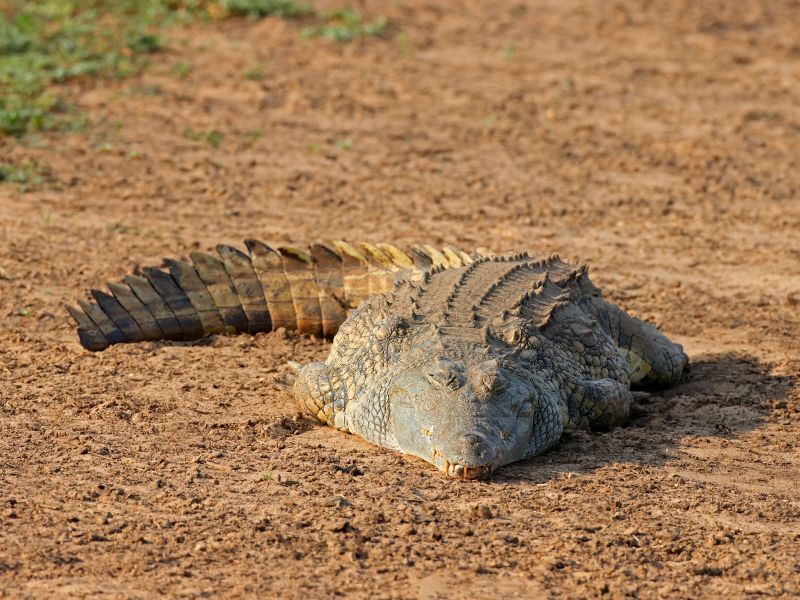
Often the epicenter of some of the most intense and exhilarating safaris, the Nile crocodile emerges in the blink of an eye to capture its prey.
Amazingly, most tourists can’t even tell the Nile crocodile is resting in the water because, despite their sheer size, these reptiles are masters of patience and staying still. You’ll only know there’s a crocodile when it sees prey, and by then, it’s often too late for the poor animal.
Springbok
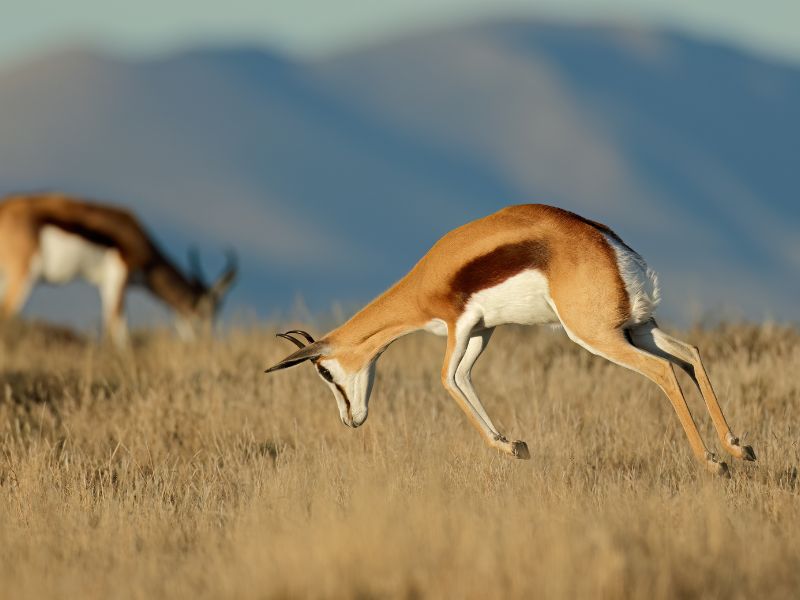
Another antelope, Springboks, is a confident species, despite almost always getting into the clutches of wild predators. Their unique appearance makes them a sight to behold, but there’s one special thing about them: pronking. Pronking is a defense strategy; springboks can leap multiple times into the air, allowing them to escape from sharp claws at the last minute. But sometimes, springboks pronk to show off; it’s prevalent during mating season.
Cheetahs
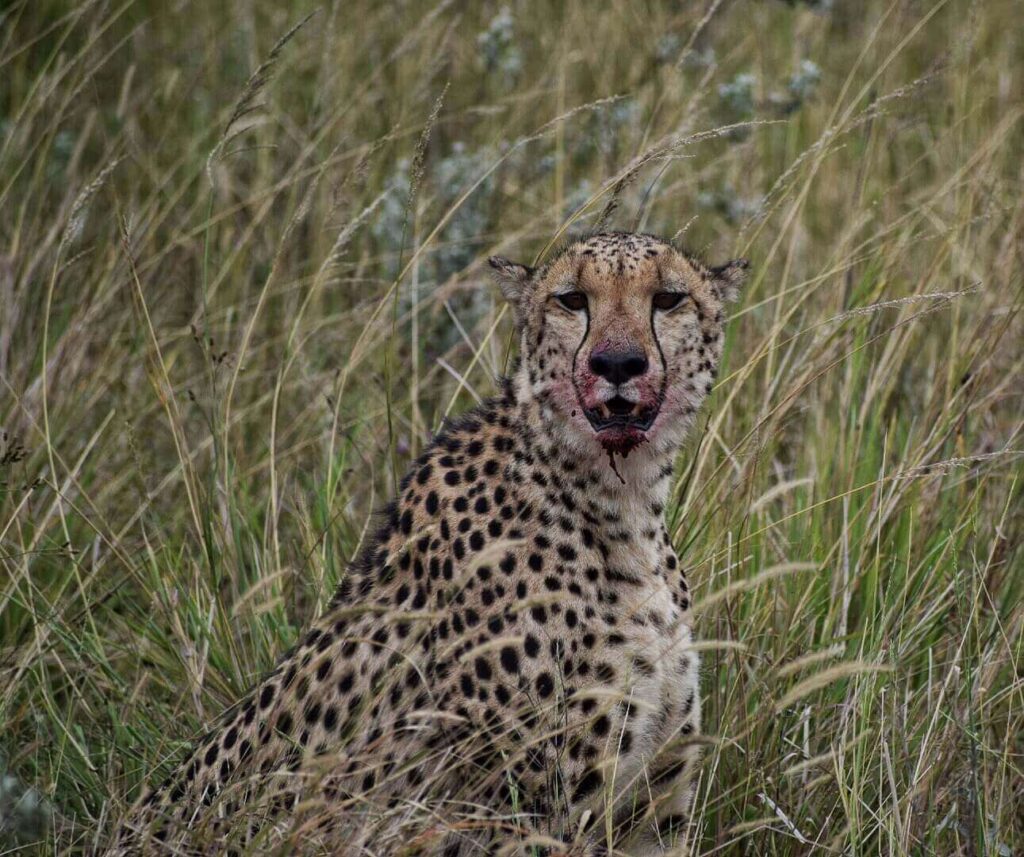
Cheetahs are found in the southern part of Africa. They have slender bodies, long legs, and sleek structures with distinctive spotted coats. They are famous for their fast speed, which can exceed 60 miles per hour, making them among the fastest animals in the world. Unfortunately, the cheetahs are facing numerous challenges, including habitat loss, which has greatly reduced their numbers.
Jackals
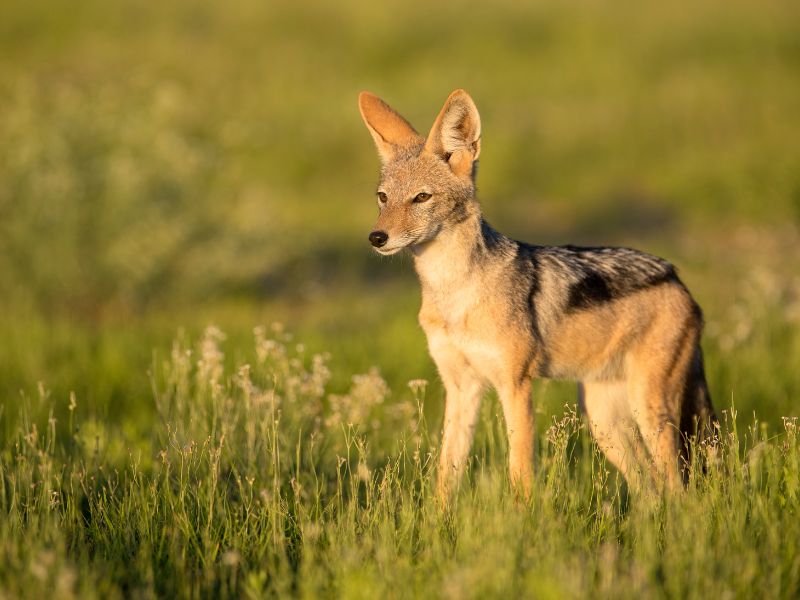
South African Jackals are found throughout the region, from the Cape to the savannas of Kruger Park.
They are distinguished by their diet and feeding habits and their silver-black fur.
You can hear more than you can spot them, and their haunting calls fill the night as they communicate with their mates or pack. The jackals are adaptable to a range of habitats, and they play a critical role in the ecosystem of South Africa.
Vultures
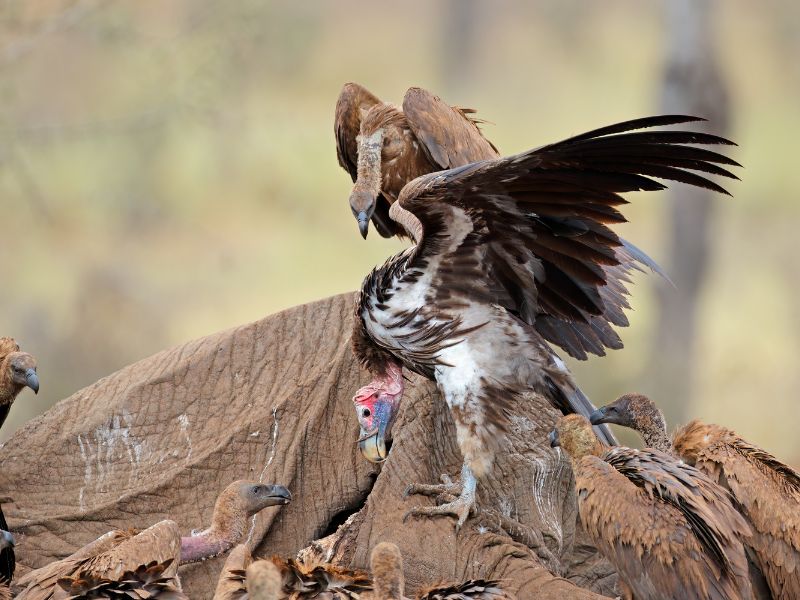
Vultures are large, powerful birds with broad wings and keen eyesight. They are often seen soaring high in the sky, scanning the land for dead animals to feed on.
Species like the Cape Vulture and the Lappet-faced Vulture play a vital role in preventing the spread of disease by consuming dead animal matter. Their numbers, however, are declining due to habitat loss and poisoning, making conservation efforts to save them increasingly important.
Nyala
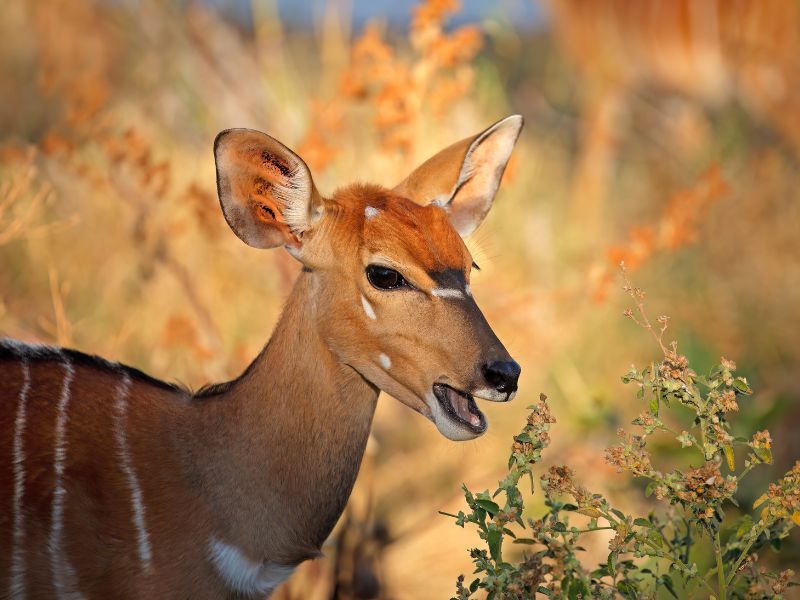
Male Nyalas have a striking look with their dark-brown coats adorned with white stripes and long, spiraled horns, while female nyalas have reddish-brown fur without horns, making them one of the most sexually attractive animals.
Penguins
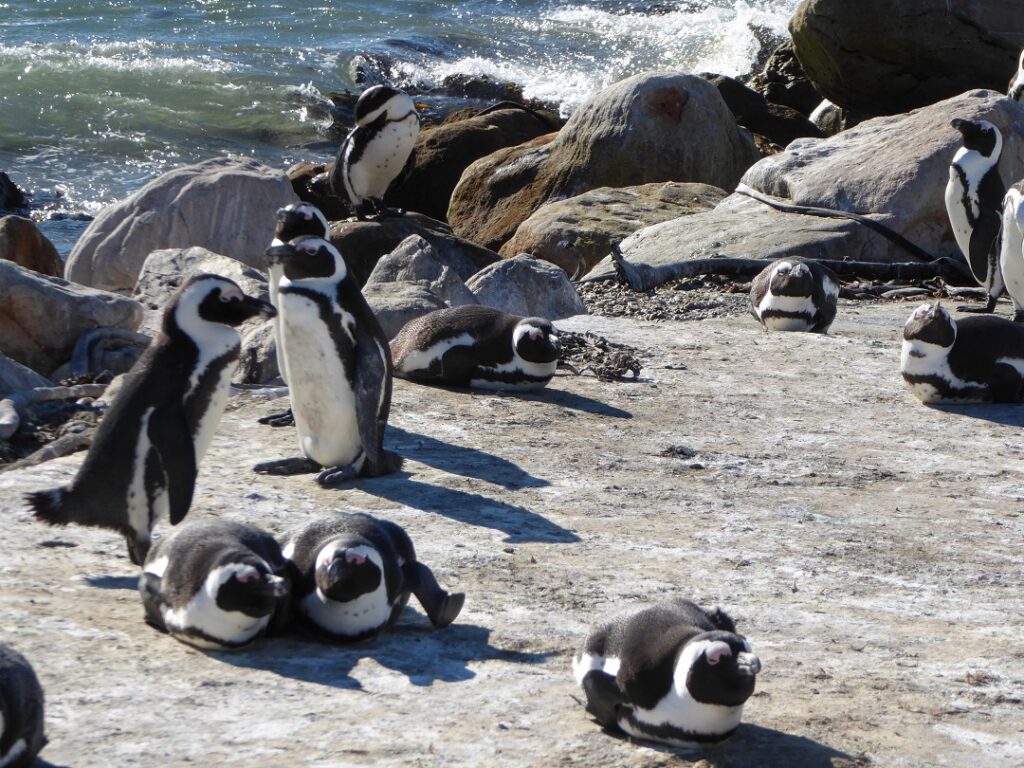
African penguins are easily identifiable by their black-and-white plumage and playful characteristics. They are known for their braying call, resembling that of a donkey, and their unique waddling gait, which may appear awkward and make them more prone to falls. Unfortunately, African penguins are an endangered species due to habitat destruction, with conservation efforts in place to protect their decreasing numbers.
Hippos
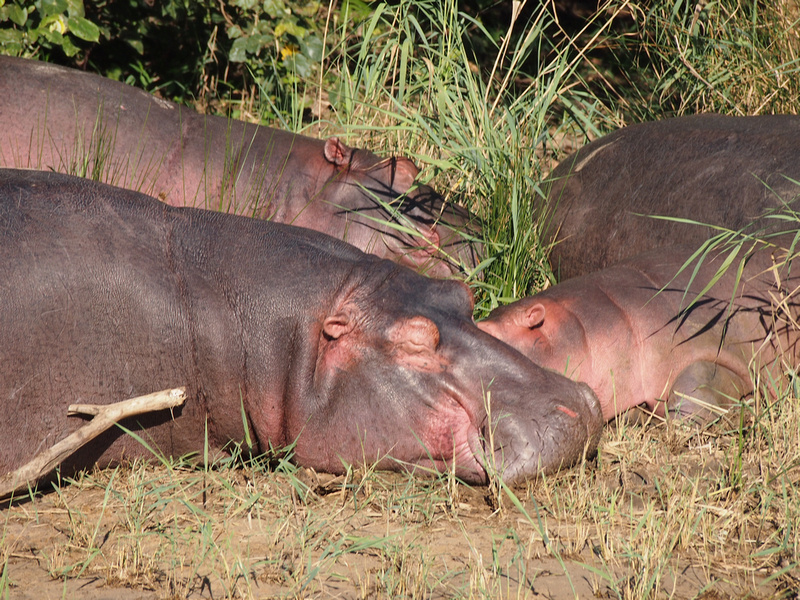
South African hippos reside in the tranquil rivers and lakes of places like the iSimangaliso Wetland Park along the coast of South Africa’s KwaZulu-Natal Province.
With their barrel-shaped torsos and enormous size, hippos spend much of their time in the water to keep their massive bodies cool under the blazing African sun. Despite their friendly appearance, they are one of the most dangerous animals in Africa.
Giraffes
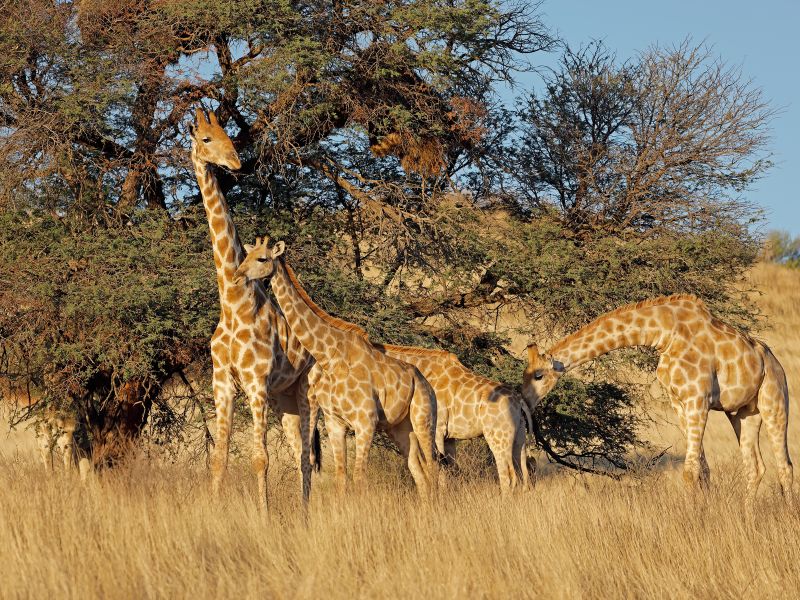
Giraffes are an important part of the South African landscape, most prominently seen in the Kruger National Park. With their long necks and thin legs, they roam the open woodlands, looking through the treetops that few other animals can reach.
Giraffes are social animals and have a peaceful demeanor, which, along with their height, gives them a broad view of the plains, making them excellent at spotting predators from afar.
Ostriches
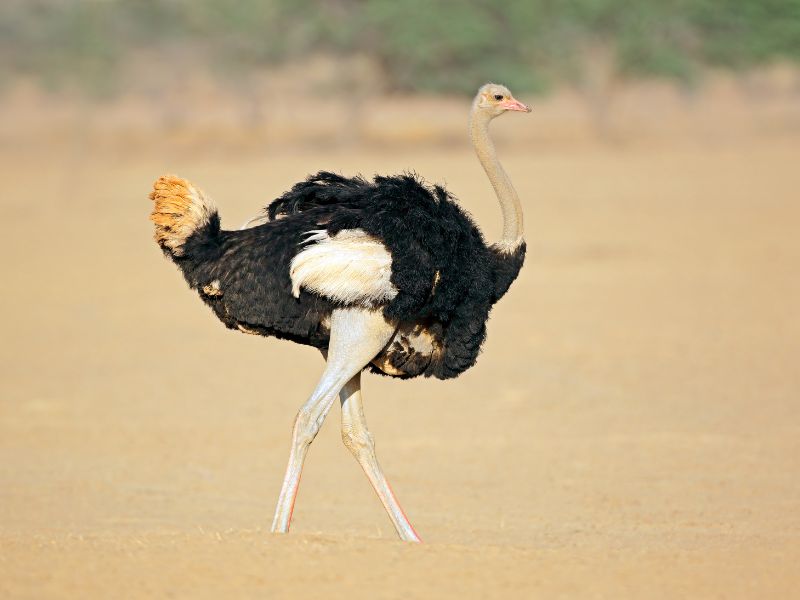
Ostriches are the world’s largest birds that are found in abundance in the diverse landscapes of South Africa. They are known for their remarkable speed and can sprint up to 70 km/h. This gives them an opportunity to run away from their predators as fast as they can. Ostriches can be seen particularly in protected areas like the Addo Elephant National Park, where they contribute to the region’s biodiversity.
Hyenas
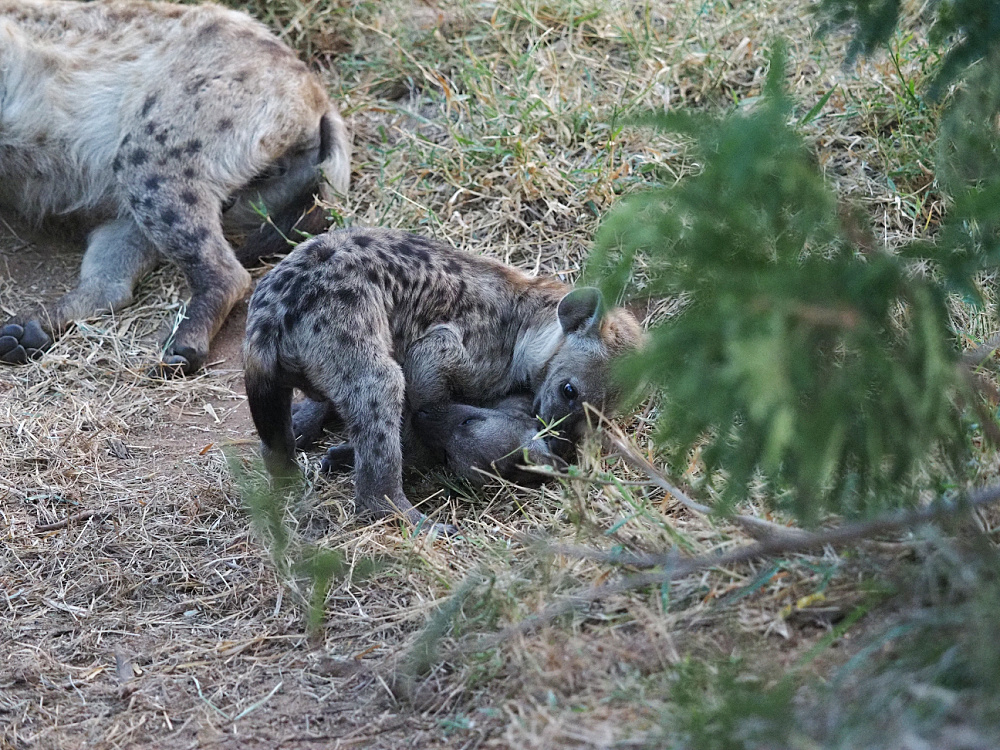
South African hyenas are found in savannah and grassland regions like Kruger National Park. Hyenas are excellent hunters known for their powerful jaws and haunting voices that can sound eerily like human laughter.
13 South African Safari Lodges That Are Redefining Sustainable Travel in the Wild
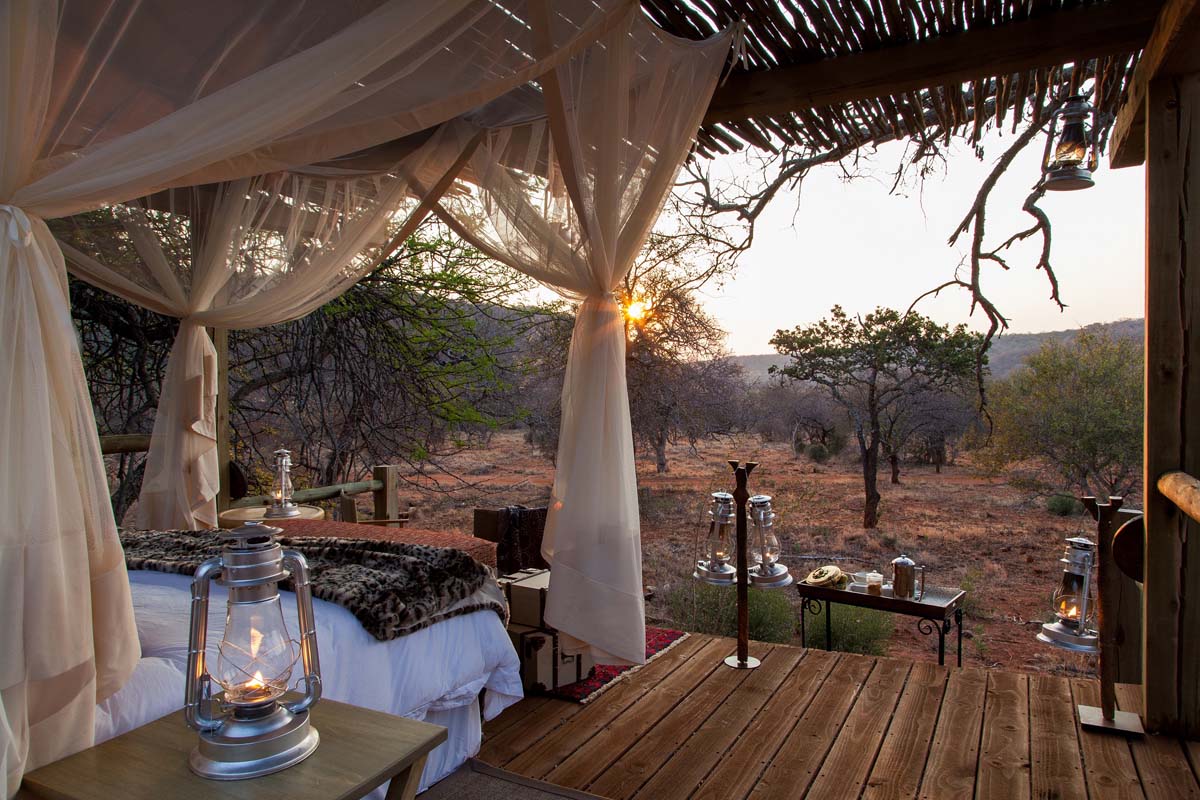
Places to Get a Front-Row Seat to the World’s Largest Animal Migrations

The World’s Largest Animal Migrations
Emese Maczko is a travel blogger behind Eco Lodges Anywhere. Having explored several destinations around Europe, the US, Indonesia, and Australia, and resided in Germany, the United Kingdom, and Luxembourg, Emese possesses a keen understanding of diverse cultures and an appreciation for the beauty of each destination she visits. She advocates for sustainable travel and ecotourism.


